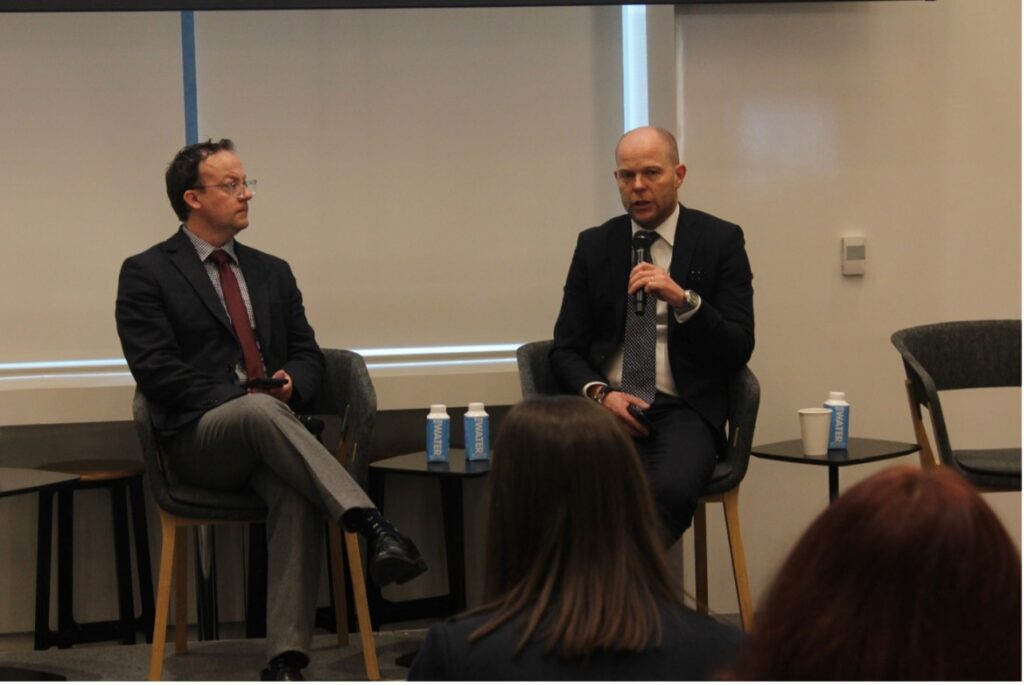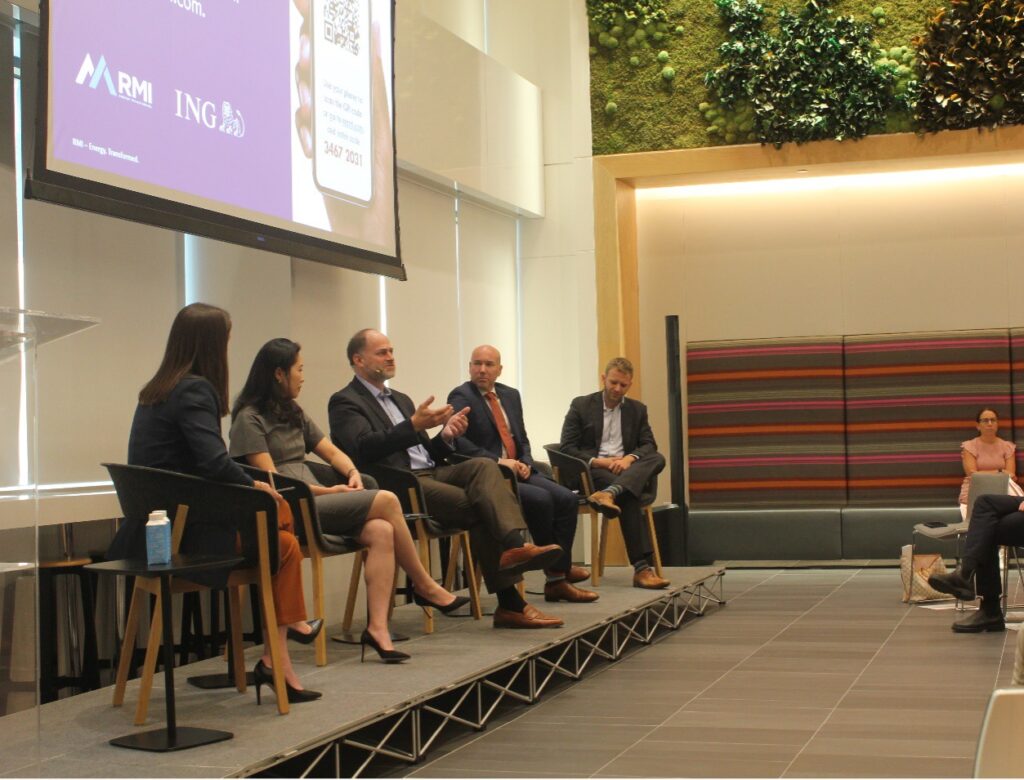
How Financing Industrial Decarbonization Is Moving from Disclosures to Dealmaking
After measuring emissions from their industrial loan books, banks are structuring multi-billion-dollar, first-of-a-kind debt packages in Europe. Now financial institutions have the templates, products, and partnership models to finance low-carbon production in the United States.
It’s the deal everyone was talking about: H2 Green Steel’s €1.5 billion equity raise defined the finance agenda at New York Climate Week (NYCW) 2023. We finally have a case study for off-balance sheet financing in industrial decarbonization. The Swedish start-up’s novel project finance approach for a €5+ billion greenfield, green hydrogen-based steel plant has changed how heavy industries approach both climate action and fundraising.
With the Inflation Reduction Act (IRA) in the United States, conditions are ripe to translate H2GS’s game-changing financing approach across the Atlantic. To talk through this multi-billion-dollar decarbonization opportunity, RMI and ING convened a diverse group from across the industrial space at this year’s NYCW.
Arne Jahn and Louis Langlois, treasurers at U.S. Steel and Alcoa respectively, H2 Green Steel’s chief sustainability officer Lars Lundström, ING’s director of sustainable finance Cindy Jia, and Jonah Wagner, chief strategist of the US Department of Energy’s Loan Programs Office (DOE LPO), joined RMI’s Kaitlin Crouch-Hess and Brian O’Hanlon to lay out a roadmap for financing commercial-scale industrial decarbonization projects.
For industrial corporates, there are two puzzles to solve simultaneously: de-risking the project and raising efficient financing. The name of the game for first-of-a-kind financing is sharing project risk efficiently across many investors to reduce risks for individual investors, whether it’s paying offtakers in non-voting equity shares, shifting credit risk to sovereign balance sheets, or otherwise.
H2GS covered lenders’ downside with government debt guarantees while convincing equity investors (many of whom were also offtakers) of the upside, not just for the project, but for the company and sector. With the IRA, industrial financiers have the US government support they’ve spent years asking for. It’s hard to envisage green steel financing in the United States, for example, without a DOE LPO loan guarantee, a grant from the DOE’s Office of Clean Energy Demonstrations, and/or federal clean hydrogen tax credits.
Aside from providing cheap debt in a rising interest rate environment, the US government can help bridge the “greenium” charged to customers for low-carbon products as well as bolster a project’s offtakers’ credit ratings by procuring at scale. The DOE is launching a $1 billion demand-side initiative for clean hydrogen, for example; and, if federal agencies joined corporate procurers in the new Sustainable STEEL Buyers Platform, their gold-standard credit ratings would de-risk projects and drive down financing costs.
Industrial corporates with limited balance sheets or debt capacity may have alternative avenues to financing decarbonization initiatives through project finance and/or joint ventures (JVs) with like-minded investors. Aluminum producer Alcoa, for instance, is co-investing alongside mining conglomerate Rio Tinto, tech giant Apple, and the Canadian and Quebec governments in the ELYSIS carbon-free aluminum project.
Community engagement was also emphasized by panelists as an effective tool to de-risk projects, specifically by decreasing permitting times and the chances of delays. It can take 6 to 8 years to clear tough Scandinavian environmental approvals, for instance. H2GS secured permits in under 18 months through honest, open dialogue with local residents, regional boards, and civil society organizations. There’s now guidance on community engagement for US-based sponsors planning to access federal incentives.
Lenders can continue to help industry players optimize their strategies and capital stacks, whether as sustainability coordinators in helping set ESG frameworks and targets or as lead arrangers in structuring the financing. The Sustainable STEEL Principles, which began as a steel emissions disclosure platform for banks, have helped harmonize green steel standards across the sector with standard-setters like ResponsibleSteel and SBTi.
In addition, Cindy Jia from ING noted that financial institutions can play an important role in helping clients form valuable partnerships in decarbonizing the value chain, for example connecting green steel projects to renewable developers as offtakers and to auto manufacturers as suppliers.
Challenges remain for H2GS and industrial decarbonization projects more widely. H2GS will have to deliver cash to its investors while running an operation that’s never been attempted before, never mind by a start-up. Meanwhile, not all metals or industrial producers have access to the stable, clean hydropower that powers H2GS or ELYSIS. Some challenges (e.g., labor availability and electric transmission) are cyclical, while others (e.g., shifting politics and regulatory uncertainty) are perennial.
Structuring project financing for industrial decarbonization will be like putting together puzzle pieces: Producers and their financial partners must share risk and returns with local communities, employees, offtakers, suppliers, utilities, and government. And every puzzle will look a little different. H2 Green Steel’s financing model is one vision; green industrial projects in the United States may rope in a different set of stakeholders, including hydrogen tax credit investors.
The puzzles may be different, and the pieces may alter, but we saw and heard at NYCW 2023 that the collective desire to decarbonize the industrial sector is consistent, and that banks and financiers can play a critical role in solving the puzzle. We look forward to seeing the progress that’s been made at NYCW 2024. For now, all eyes turn to Dubai and COP28.
